Fragrant water lily identification and control
Nymphaea odorata
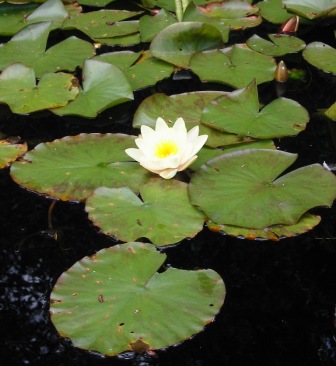
Fragrant water lily occurs from Puerto Rico to Alaska and from California to Quebec. Its many subspecies and varieties may be found floating in ponds, lakes and sluggish streams just about everywhere in North America. It was introduced to Washington as a water garden plant and has since escaped into numerous natural lakes and ponds, often growing so densely that it creates negative impacts on recreation and habitat.
Legal status in King County, Washington
Fragrant water lily is a Class C noxious weed on the Washington State Noxious Weed List, first listed in 2002. In King County, it is on the non-regulated noxious weed list. Property owners are not required to control this species. For more information, see Noxious weed lists and laws.
Identification (see below for more photos)
Leaves float on the water's surface and are nearly circular in shape. They are notched to the center and the leaf lobes are pointed. The leaves are on the tops of long stalks that extend from long rhizomes in the mud. Fragrant water lily flowers are showy, white and aromatic. Flowers of unusual color and shape are characteristic of hybrid water lilies. The stems are flexible so when the water level lowers, the plants don't stick up out of the water like they do with native spatterdock (Nuphar polysepalum).
Habitat and impact
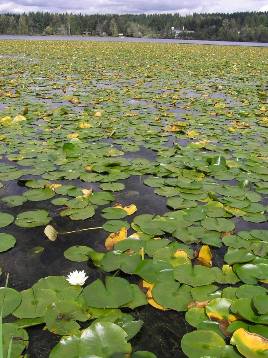
Fragrant water lily is a perennial, floating-leaved aquatic plant, typically found in 3 to 6 feet deep water. It grows in freshwater lakes, ponds and slow-moving streams and ditches. It can tolerate a wide range of pH. Prefers mucky to silty lake/pond bottoms.
This plant spreads quickly and widely. One rhizome can cover up to a 15-foot diameter circle in five years. Drownings in King County have been attributed to swimmers getting tangled in dense water lily stems. Fragrant water lily also fouls boat motors and restricts passage for non-motorized boats. Stagnant mats create mosquito breeding areas and increase water temperatures. Fragrant water lily can contribute to algal growth and water quality problems. It is currently found in many lakes and numerous ponds throughout King County.
Growth and reproduction
Usually flowers from June to October. After fertilization, the flower stalks curls like a corkscrew, the drawing the flower underwater. The seeds float back up to the surface and are spread through water movement. Has thick, fleshy rhizomes and can spread vegetatively when rhizome fragments break off. Dies back in the fall and decays on the water's surface.
Control
Prevent further infestations by not planting this species in natural lakes and ponds.
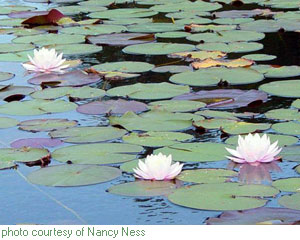
Permits are generally required for any control methods done in natural waterbodies such as lakes and wetlands, including manual methods.
Small patches in shallow water can be carefully dug up, making sure to collect all root and stem fragments. For larger patches or in deep water, removal of leaves and tops of stems by hand or with cutting tools can be effective when repeated regularly over two to three years. This plant can be composted on land or disposed of in yard waste bins.
A bottom barrier can be used to suppress growth in small areas such as a boat launch or around a swimming area. This method requires a permit from WA Dept of Fish and Wildlife.
Herbicides may be the most cost-effective option for eradication of large infestations. Professional, licensed contractors are available for hire for this method. In Washington, specially formulated aquatic herbicides are available only to licensed applicators and applying herbicides to water requires a permit from WA Dept of Ecology in most cases. Never apply non-aquatic herbicide products to water since most of them include ingredients that are harmful to fish and other aquatic organisms.
Additional information on fragrant water lily
-
King County Best Management Practices for Fragrant Water Lily (Acrobat pdf)
- Washington State Noxious Weed Control Board (external link)
- Fragrant water lily weed alert
- UW Burke Museum photos and distribution for fragrant water lily (external link)
- UW Burke Museum photos and distribution for native yellow pond lily (external link)
What to do if you find this plant in King County, Washington
Because fragrant water lily is so widespread, property owners in King County are not required to control it and we are not generally tracking infestations. We can provide advice on how to control fragrant water lily, but there is generally no legal requirement to do so.
Fragrant water lily photos

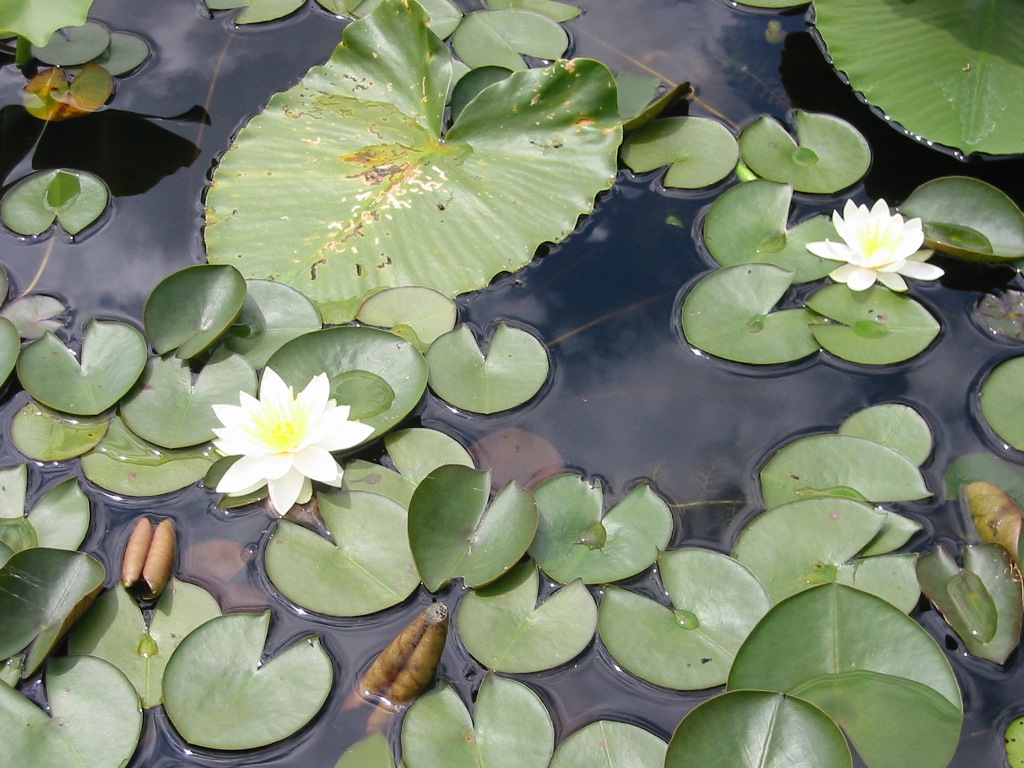
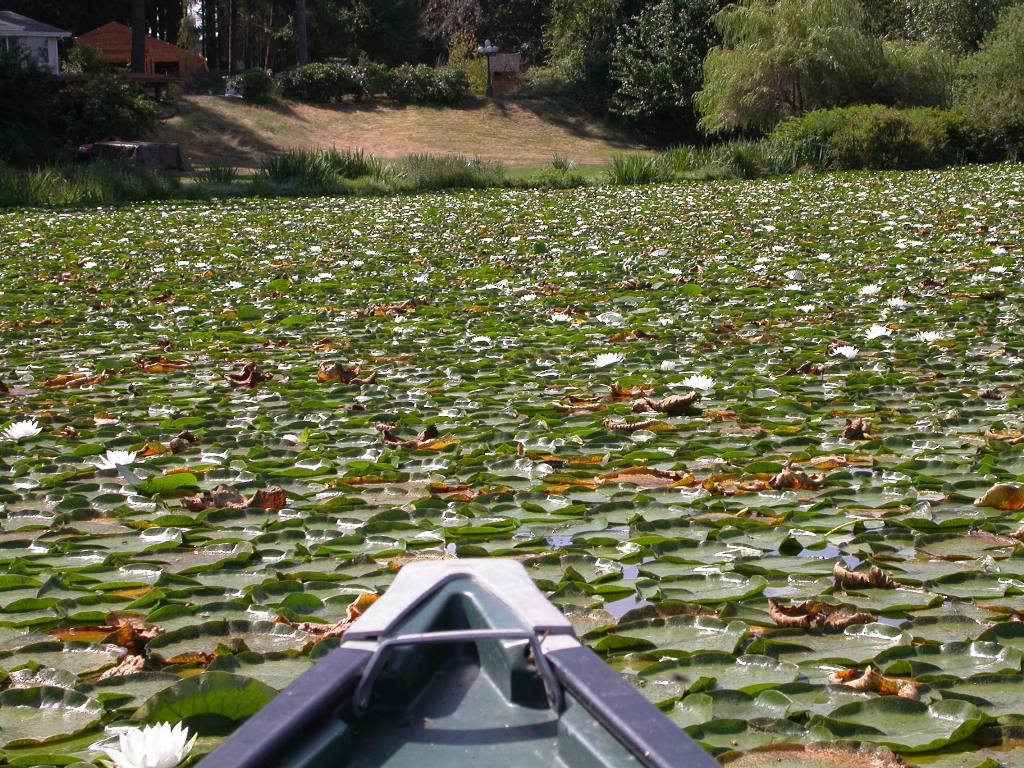

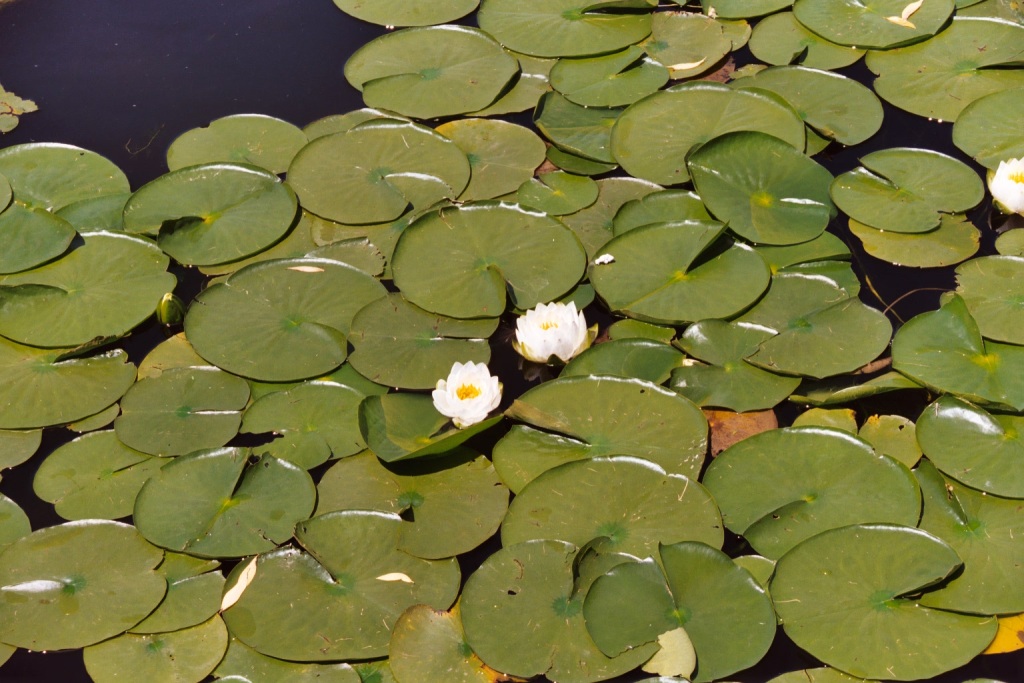
Related information
Related agencies
Program offices are located at 201 S. Jackson St., Suite 600, Seattle, WA 98104. To contact staff, see the Noxious Weed Control Program Directory, send an email, or call 206-477-WEED (206-477-9333).

 Translate
Translate